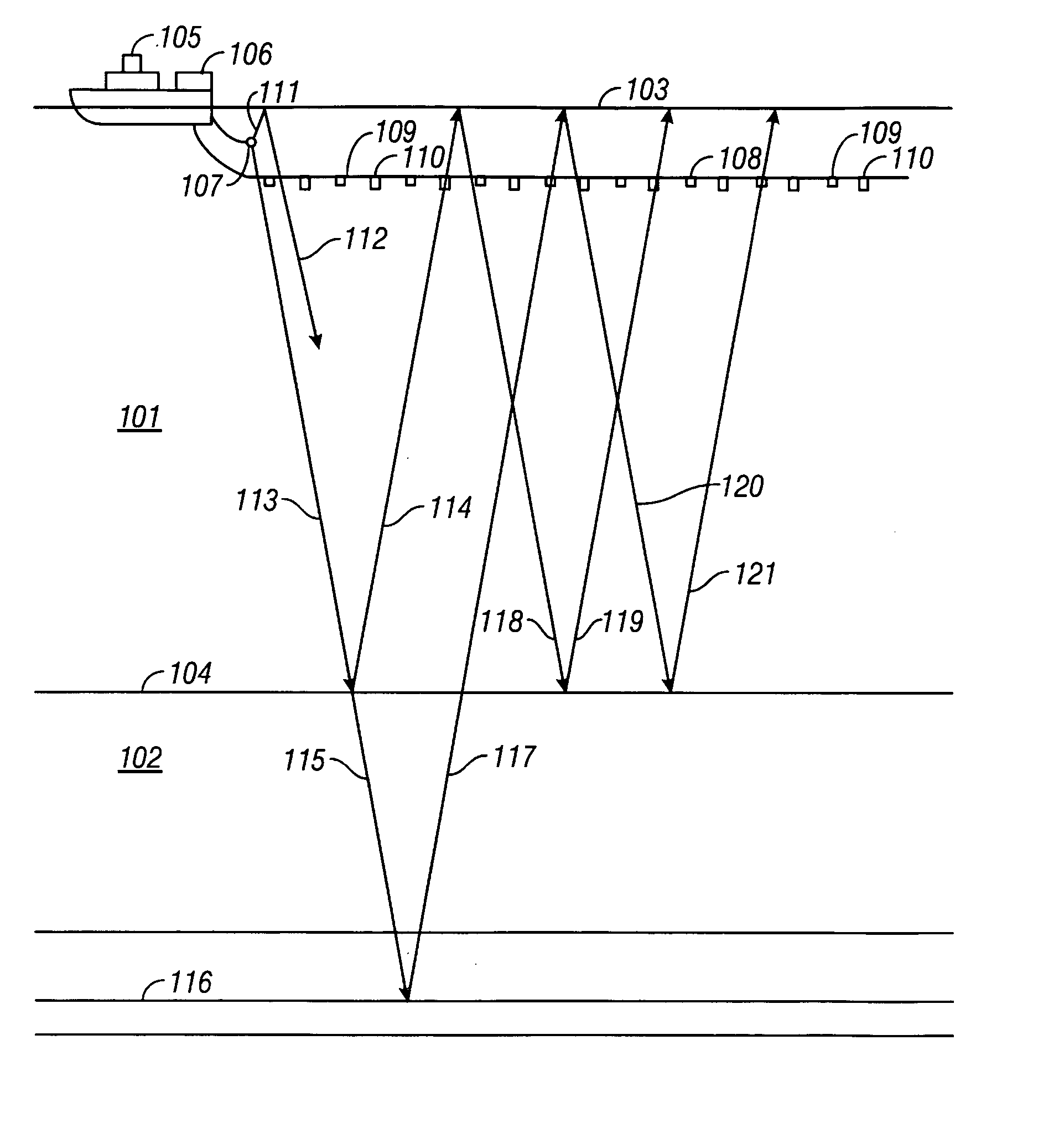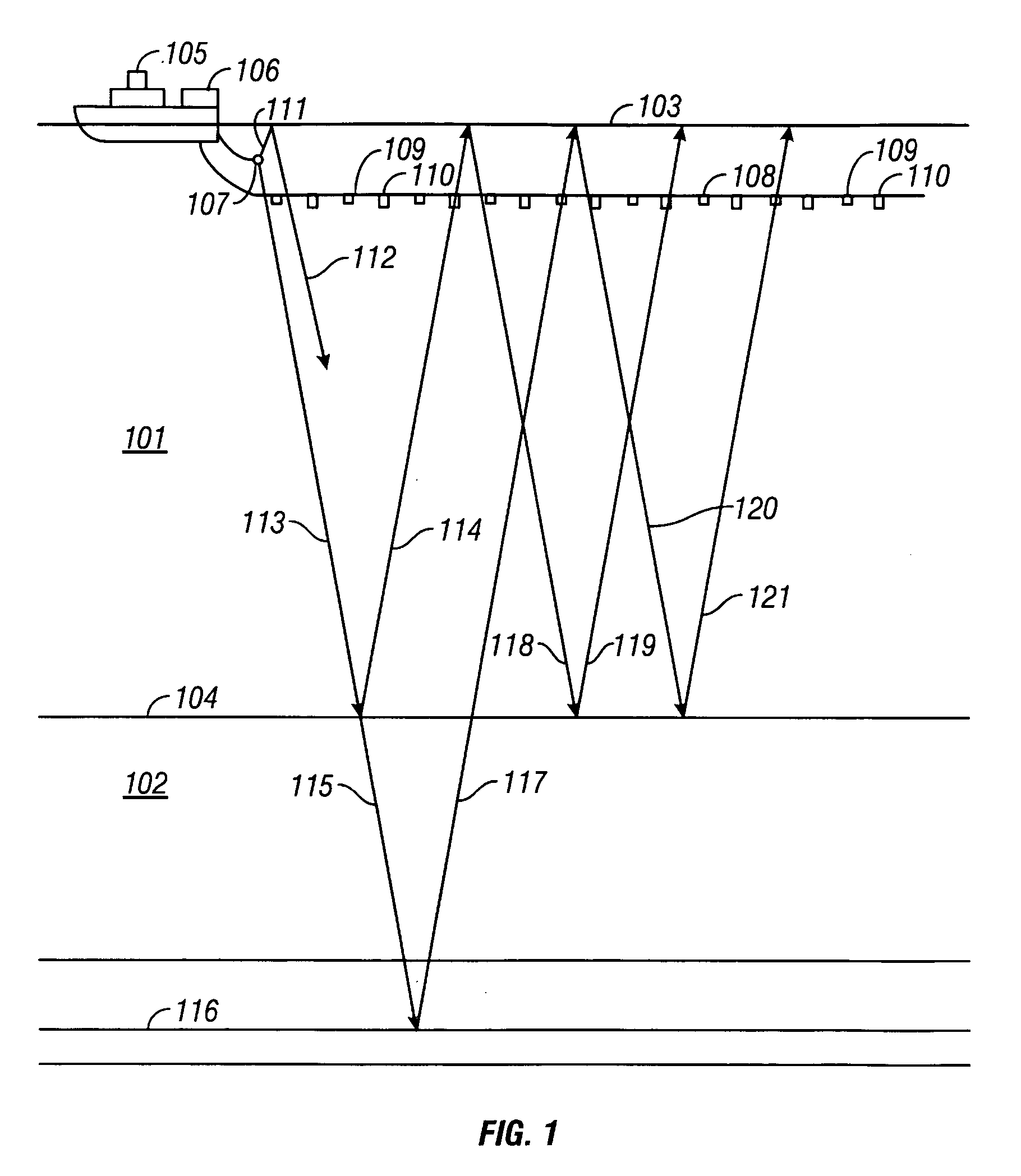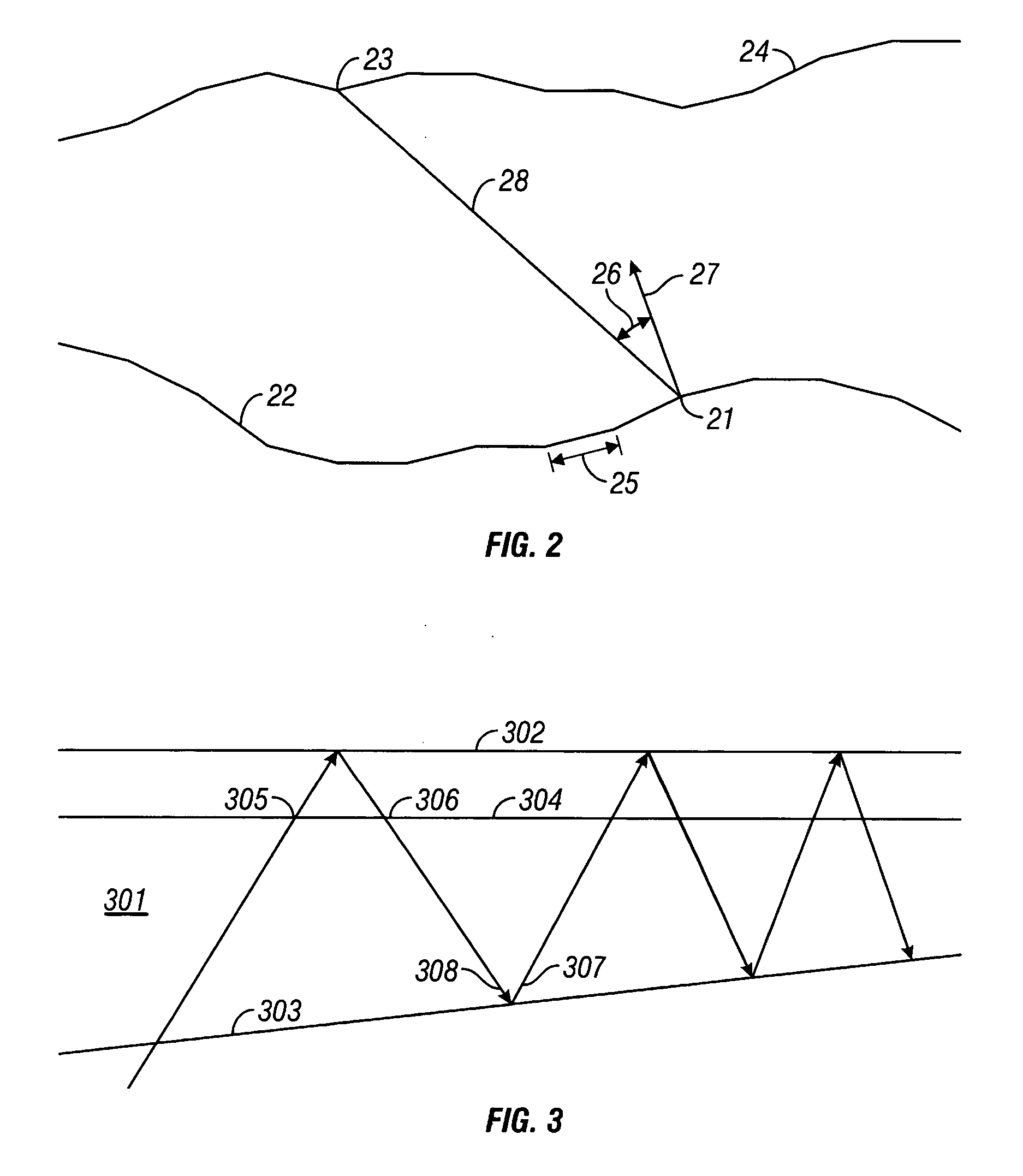System for attenuation of water bottom multiples in seismic data recorded by pressure sensors and particle motion sensors
a technology of pressure sensor and water bottom multiple, applied in seismology, seismology, instruments, etc., can solve the problems of difficult identification and interpretation of desired primaries, ghosts, and secondary seismic sources with time delay
- Summary
- Abstract
- Description
- Claims
- Application Information
AI Technical Summary
Problems solved by technology
Method used
Image
Examples
Embodiment Construction
[0036] The invention is a method for attenuation of water bottom multiples from seismic data recorded by pressure sensors and particle motion sensors in marine towed streamers. In one embodiment, the pressure sensors and particle motion sensors are co-located in the towed streamer. In an alternative embodiment, the sensors have sufficient spatial density so that the respective wavefields recorded by the pressure sensors and particle motion sensors, can be interpolated or extrapolated to produce the two wavefields at the same location.
[0037] The method of the invention is a prediction and subtraction method for attenuating multiples. First, however, before the prediction step, the upgoing and downgoing wavefields at the position of the sensors in the seismic streamers are calculated from both the pressure sensor signal and the particle motion sensor signal. Then, the multiples are predicted by means of wave-equation datuming and the predicted multiples are subtracted from the origin...
PUM
 Login to View More
Login to View More Abstract
Description
Claims
Application Information
 Login to View More
Login to View More - R&D
- Intellectual Property
- Life Sciences
- Materials
- Tech Scout
- Unparalleled Data Quality
- Higher Quality Content
- 60% Fewer Hallucinations
Browse by: Latest US Patents, China's latest patents, Technical Efficacy Thesaurus, Application Domain, Technology Topic, Popular Technical Reports.
© 2025 PatSnap. All rights reserved.Legal|Privacy policy|Modern Slavery Act Transparency Statement|Sitemap|About US| Contact US: help@patsnap.com



